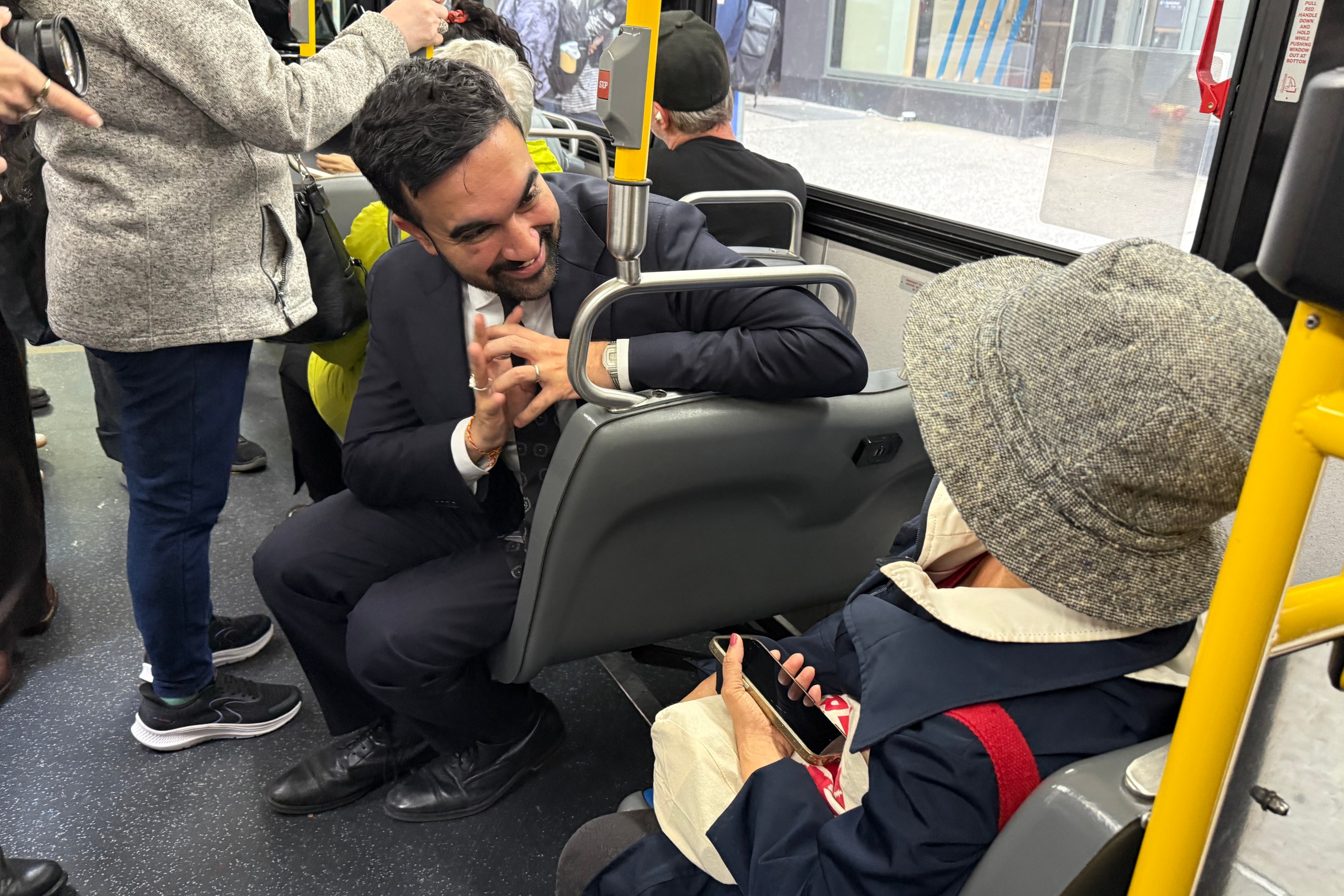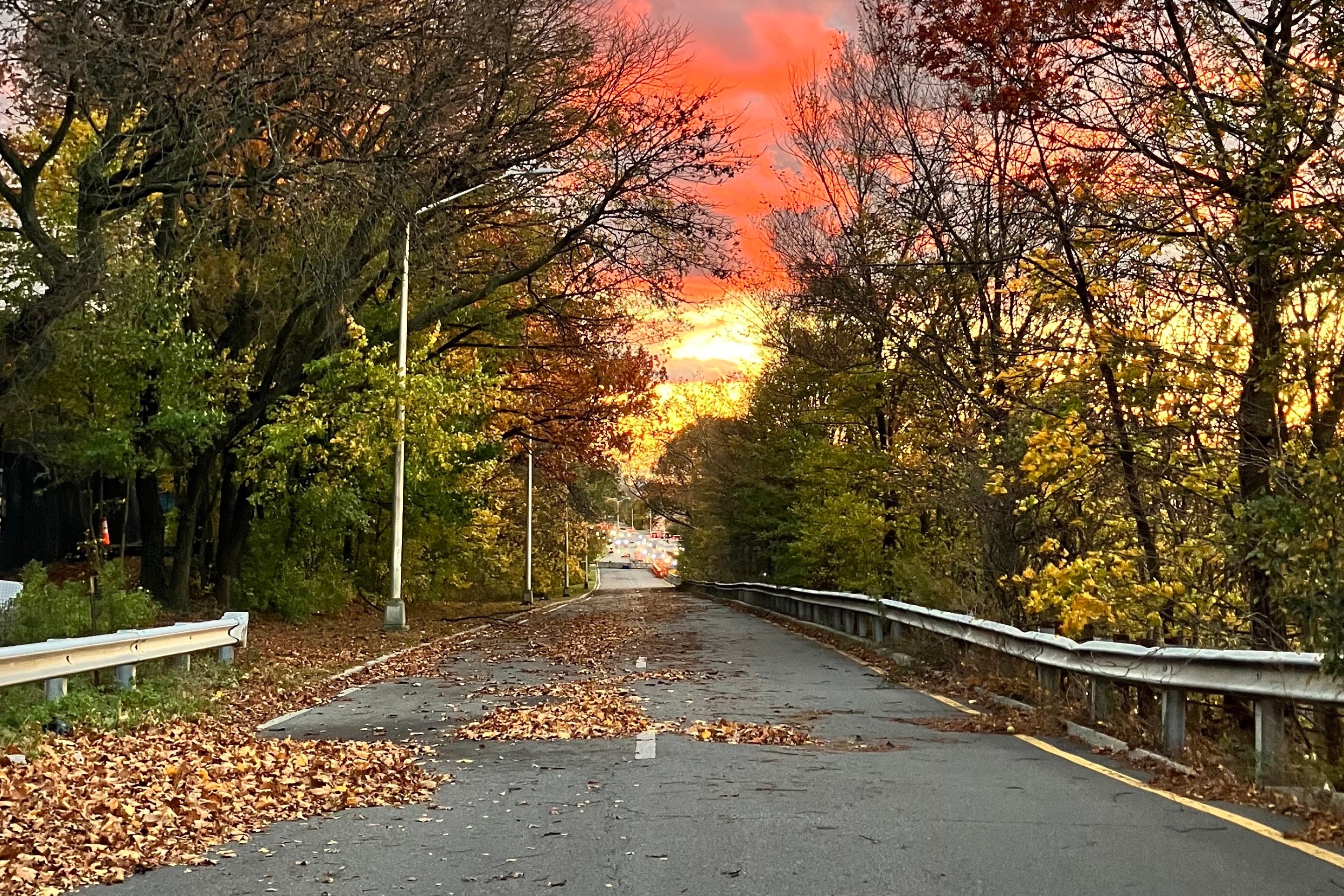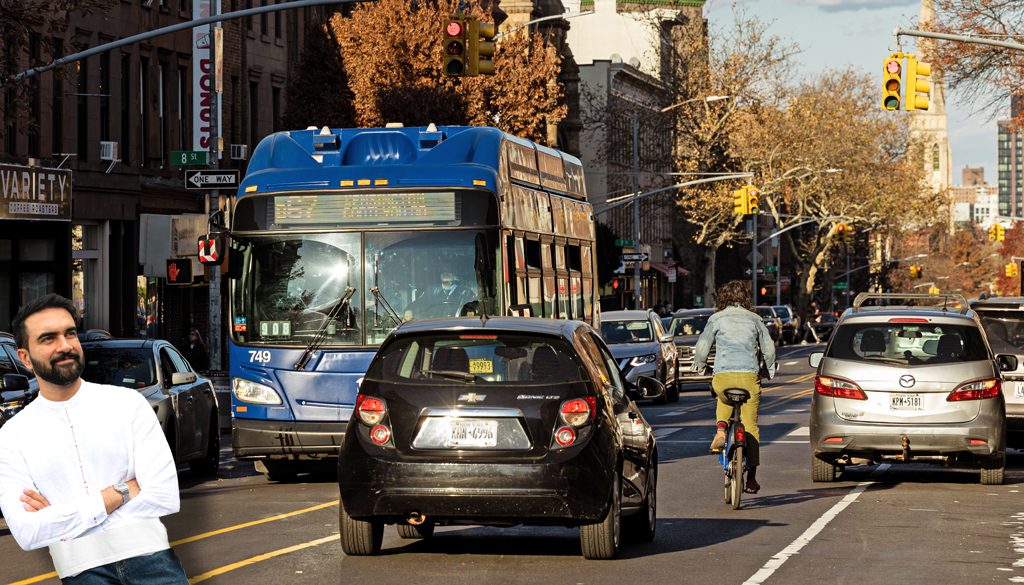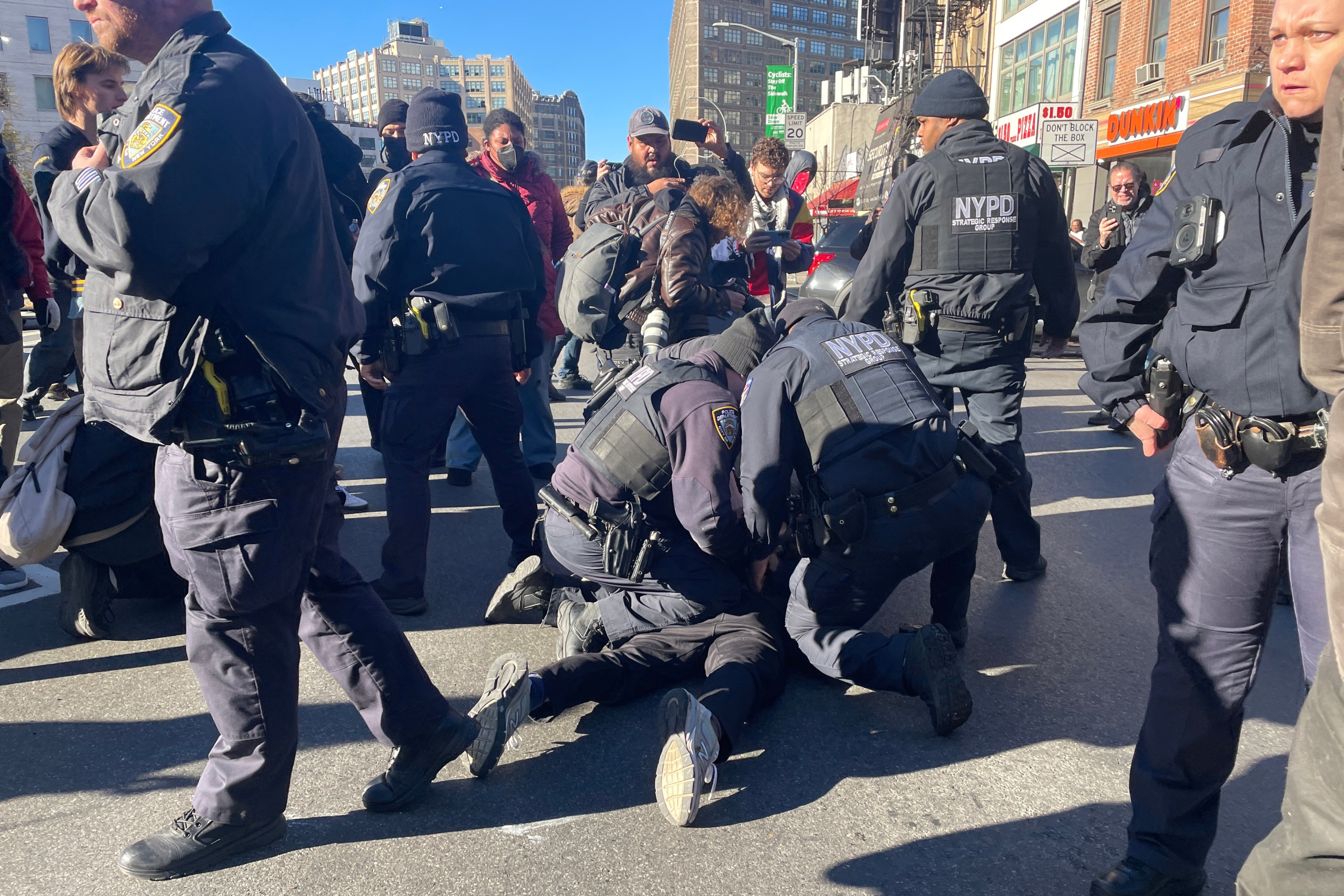The southernmost block of Brooklyn's Ashland Place remains harrowing and chaotic for cyclists two years after DOT scrapped it from a protected bike lane plan for the crucial corridor — even after a slate of elected officials signed onto a letter last month asking for just that.
"The support is so unanimous. It’s every elected official that represents the district as well as the electeds that are adjacent to the corridor, because their constituents are affected," Kathy Park Price, an organizer for Transportation Alternatives said of the letter.
Signatories included Council Members Crystal Hudson (D-Fort Greene), Shahana Hanif (D-Park Slope), and Lincoln Restler (D-Williamsburg); Assembly Members Andrew Gounardes (D-Bay Ridge), Jo Anne Simon (D-Downtown Brooklyn), and Phara Souffrant Forrest (D-Fort Greene); Public Advocate Jumaane Williams; and Borough President Antonio Reynoso.
The Adams administration cut the critical block of Ashland between Hanson Place and Lafayette Avenue out of the 2023 protected bike lane project after the mayor's since-indicted advisor Ingrid Lewis-Martin intervened on behalf of Two Trees, a developer that owns residential building and garage on the block.
As a result, the key link between Downtown Brooklyn and Manhattan and several residential neighborhoods has a one-block gap.
"Ashland Place between Hanson Place and Lafayette Avenue is a missing link in Brooklyn’s protected bike lane network, connecting neighborhoods from Sunset Park to Fort Greene to Williamsburg and to the Brooklyn Greenway," the elected officials said in their letter, which several bike advocates also signed.
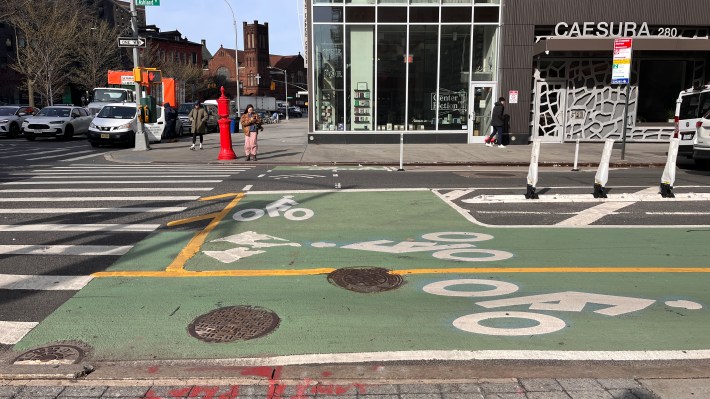
Brooklyn Community Board 2 joined the calls to close the block-long gap a few weeks later, on March 19. But the day after the letter was sent to the administration, Brooklyn Borough Commissioner Keith Bray offered the advocates and lawmakers a vague non-committal response, Park Price said.
“I got a response from Keith Bray, it was a very generic, ‘Thanks, we’ll take your input into consideration,’ really not good enough,” she said. (There's a petition to change his mind here.)
DOT Commissioner Ydanis Rodriguez ultimately responded with a similar message, Park Price said. The agency has not responded to Streetsblog's requests for comment about the letter.
Cycling advocates expressed frustration that the single block remains a sticking point. The area is bustling, and the Citi Bike station at Hanson Place is one of Brooklyn’s 10 busiest, with over 155,000 bikes leaving its docks in 2024.
"I wish we could be focusing our efforts on other projects that support safe streets in Brooklyn, and not this project that was promised two years ago," said Park Price. "It’s like the hardest fought block in Brooklyn. A bike network is only as strong as its weakest link."
Instead of a protected bike lane, DOT officials kept two-way traffic on the block. That requires cyclists headed south to do a confusing and dangerous dance at the intersection with Lafayette Avenue. First, they have to move to the west side of the street, then they have to wait for the light to change in order to keep heading south. After they cross Hanson Place, they face double-parked cars and trucks and traffic coming from both directions.
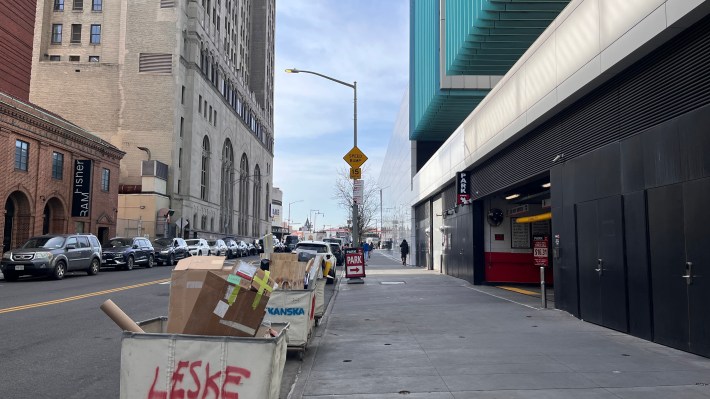
Unsurprisingly, the intersection and block are a hotbed for crashes.
In the year prior to the redesign, from October 2022 to September 2023, there were 12 crashes on the stretch of Ashland between Hanson and Lafayette, injuring three cyclists, according to city data. In 12 months after the redesign went in, the block saw 14 crashes — a slight increase — and the same number of injured cyclists.
People who live in the area and cycle to get around want to see it changed.
“Unfinished business, totally crazy and disappointing,” Nathan Bauer, a cyclist who was locking his bike in front of the Two Trees building on Wednesday, told Streetsblog.
“If you’re coming from the north heading south on Ashland you’ve got the two-way on the right side. There’s no good indication of what you’re supposed to do. It’s pretty lame."
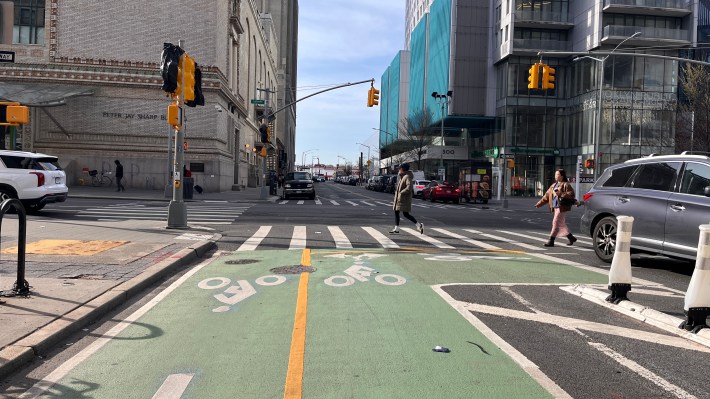
Another neighborhood cyclist told Streetsblog she avoids that block altogether, especially when she has her kids on the bike.
“I don’t do it, if I’m going to go this way I come around and go up Fulton Street," said Alex MGuinness. "It sucks, but a lot of the bike situation sucks around here."
The gash in the bike lane network is one of several reminders of Mayor Adams's deference to private interests opposed to street design changes in their areas. On McGuinness Boulevard, for example, Adams reduced the scope of a safety project in response to call from a campaign donor with business in the area.
“It’s comparable to McGuinness because of the forces, because of the private interests. It’s the exact same dynamics," Park Price said of Ashland Place. "Private interests are able to redesign our streets, prioritizing vehicles over safety at a critical corridor."
The L10 Arts and Cultural Center, a cultural center developed and backed by $84 million in city investment, is located in the Two Trees building on Ashland Place. Ironically, at an Open House New York event at the space with the building's architect Andrea Steele, in March, original renderings of the project showed the block outside the building as a car-free street.
When asked about the project’s relationship to the public realm, Steele said she designed the building with the a pedestrianized Ashland Place in mind.
“There were talks early on, I said to City Planning, ‘Wouldn’t it be great if this road became a pedestrian road?’" Steele said. City officials denied the request.
"They were like, ‘Haven’t you taken enough?’” said Steele.

